More women have cancer than men in India. According to a World Cancer Report, 5.37 lakh Indian women were diagnosed with cancer in 2012, as compared to 4.77 lakh men. This and several other factors call for more awareness about cancers that primarily affect women. Prevention and early detection can save lives. So on National Cancer Awareness Day, TC46 shares the 5 most common cancers women are diagnosed with along with expert-led advice on these conditions.
Breast Cancer

It is reported that in every four minutes, an Indian woman is diagnosed with breast cancer and it accounts for 25% to 32% of female cancers across the country. Dr Uma Dangi, Consultant Medical Oncology at Hiranandani Hospital in Mumbai explains this condition and what to look out for.
Warning Signs Of Breast Cancer
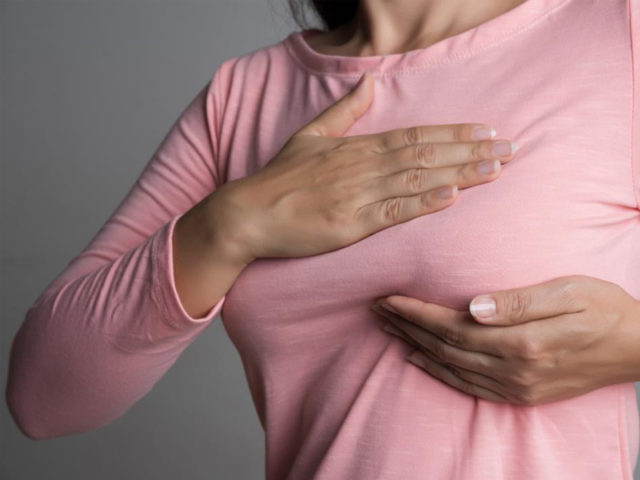
The most common symptom of breast cancer is the presence of a lump. Most importantly, the lump is painless in its early stages and hence many times gets ignored. A painless lump in the breast is a very important sign of breast cancer. In addition, other symptoms include changes in the shape or contour of the breast, bleeding or discharge from the nipple, and change in the nipple and areolar region without any lump, which includes retraction of the nipple. In very advanced stages, the skin of the breast may get involved leading to redness and appearance of orange-like skin, also called Inflammatory Breast Cancer.”
Read Here: Things you must know about breast cancer.
Symptoms Of Breast Cancer In Women Other Than Lumps

Symptoms of Breast Cancer other than lumps to look out for include:
- Discharge from the nipple
- Flaky skin or cracking of the nipple
- Dimpling around the nipple
- Breast swelling
- Visual difference skin changes on the breast
- Inward nipple
- Changes in breast contour
- Sudden increase in breast size over a short period of time
- Changes in touch- the breast may feel stiff, tender or warm
- Vein Patterns such as an increase in the number or size
- One of the other common symptoms to look out for is a lump in the armpit, breast or around the collarbone
At-Home Examinations For Better Breast Health

Every woman should self-examine their breasts once a month to stay alert. If you are menstruating, it is better to self-inspect after the menstruation period gets over. To perform at-home examinations do the following:
- Visually inspect your breasts in front of the mirror and look for colour, texture, size, changes. Check under your breasts for ridges and see whether they’re symmetrical
- Use the pads of your three middle fingers to feel for any lump while lying down or standing in the shower without a bra or clothes. While one is lying down, the breast tissue spreads out evenly, making it easier to detect any change. Raise your arms overhead and palms pressed together, then flex your chest muscles with arms on the hips while examining. Keep changing the pressure level from mild to firm
- Gently squeeze your nipples to see whether there is any discharge from the same
Read Here: 5-point checklist for better breast health.
Noticeable Changes In Your Breasts To Be Checked By A Doctor

Consult your doctor when these persistent, noticeable changes in breasts occur:
- Hard lump/knot in the breast area or underarm
- Change in the skin over the breast, which may become hard and red
- Sudden change in the size or shape of the breast
- Bloody or any nipple discharge other than lactation
- Puckering or flaky skin around the nipple and inverted nipples
Click Here: Take this breast cancer quiz to see if are you at an increased risk for breast cancer
Available Breast Cancer Treatment Options
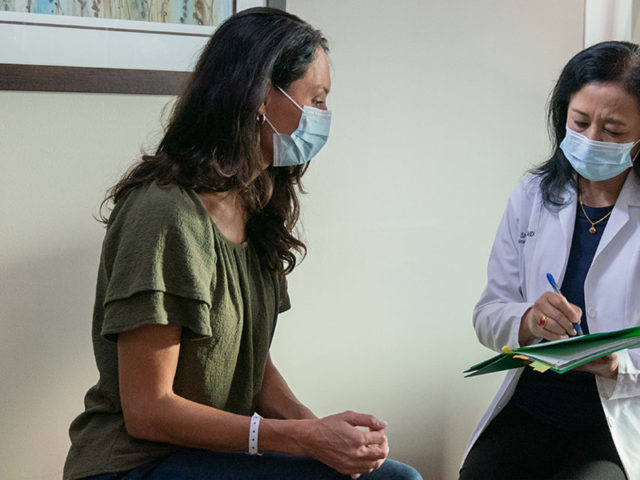
Cancer can affect any part of the body and when it affects the breast, it is called Breast Cancer. Breast Cancer can be of various types like non-invasive or In-situ Carcinoma, Ductal Carcinoma, Lobular Carcinoma, Phyllodes Tumour and more. When we talk about Breast Cancer, we most often refer to Ductal or Lobular Carcinoma.
Treatment of Breast Cancer depends upon various factors including the type of cancer, the stage of disease, age, and additional illnesses the patient may suffer from. It may include various modalities like:
- Surgery
- Chemotherapy
- Targeted Therapy
- Hormone Therapy
- Radiation Therapy
Cervical Cancer
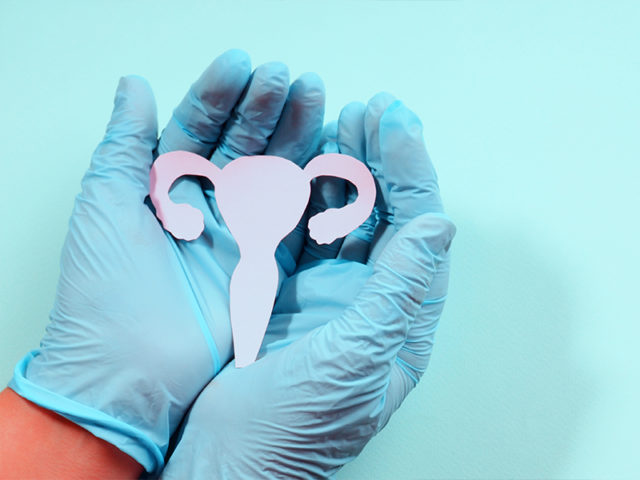
In 2018, an estimated 570 000 women were diagnosed with cervical cancer worldwide. Dr Madhushree Vijaykumar, Consultant Obstetrician and Gynaecologist at Motherhood Hospitals answers vital questions.
Major Causes Of Cervical Cancer

Cervical cancer is a type of cancer where cells change in women’s cervix, which connects their uterus with the vagina. A major cause of cervical cancer is the beginning of unusual changes in the tissue of the cervix. Most cases of cervical cancer are linked to infection with human papillomavirus (HPV). HPV is common and for most people, there are fewer chances of the virus developing into cancer. This means other factors — such as your lifestyle choices or environment factors— also determine whether you’ll develop cervical cancer.
Read Here: The causes, symptoms, prevention & treatments for cervical cancer.
Signs & Symptoms Of Cervical Cancer

There are no symptoms or sign in early-stage cervical cancer but for more advanced level cancer spread it includes signs as:
- Unusual vaginal bleeding after intercourse, between periods or after menopause
- Bloody or watery vaginal discharge that may be heavy and have a foul odour
- Pelvic pain or pain during sex
There are 4 stages of cervical cancer:
- Stage 0: Precancerous cells are present. At this stage, there are none or zero symptoms.
- Stage 1: In this stage cancer cells have grown from the surface into deeper tissues of the cervix, and possibly into the uterus and to nearby lymph nodes. Symptoms at this stage are less.
- Stage 2: In this stage cancer has now moved beyond the cervix and uterus, but not as far as the walls of the pelvis or the lower part of the vagina. It may or may not affect nearby lymph nodes and have symptoms like pelvic pain during intercourse, vaginal discharge.
- Stage 3: This is an advanced stage where cancer cells are present in the lower part of the vagina or the walls of the pelvis, and it may be blocking the ureters, the tubes that carry urine from the bladder. It may or may not affect nearby lymph nodes and may have symptoms like trouble peeing, swollen legs and bone pain along with stage 2 symptoms.
- Stage 4: This is the last stage where cancer affects the bladder or rectum and is growing out of the pelvis. It may or may not affect the lymph nodes. Later in stage 4, it will spread to distant organs, including the liver, bones, lungs, and lymph nodes. Symptoms spread to the whole body resulting in Weight loss and lack of appetite, fatigue, kidney failure, pelvic pain.
Cervical Cancer Risk Factors & Treatment

For cervical cancer, these factors may raise a woman’s risk of developing on:
- Human Papillomavirus (HPV) infection: HPV is the most important risk factor, though there are fewer chances of it developing into cancer. But cervical cancer is frequently associated with HPV16, HPV18. People who are infected with a high risk of HPV types are people who have sex at an earlier age or have multiple sexual partners.
- Immune system deficiency: Women with low immune systems have higher chances of developing cervical cancer.
- Herpes and oral contraceptives: Women who have genital herpes and who take birth control pills, may be associated with an increase in the risk of cervical cancer.
- Smoking and age: There are more chances for women to develop cervical cancer who smokes twice a day compared to non-smokers. Women with the age group of above 20 to mid-30s are exposed to this risk more.
Cervical cancer, if detected at the earliest stage, can be cured if not then various treatments are prescribed by the doctors for different stages such as surgery if cancer cells have not spread from the cervix, this is the most common treatment. Radiation therapy if doctors feel the cancer cells are present inside the body. In advanced stages, radiation and chemotherapy is recommended. In later stages, palliative therapy is provided to relieve symptoms and improve the patient’s quality of life and living. Treatment for cervical cancer is a long process and takes plenty of time.
Thyroid Cancer

Over a decade, the incidence rate of thyroid cancer in India in women increased from 2.4 (95% confidence interval (CI) 2.2-2.7) to 3.9 (95%CI 3.6-4.2) and in men from 0.9 (95%CI 0.8-1.1) to 1.3 (95%CI 1.2-1.5), a relative increase of 62% and 48% respectively. To know more about this, Dr Anil Heroor, Director-Advanced OncoSurgery Unit of Fortis Hospitals Mumbai shares his expert advice.
Thyroid Cancer Affects Women Between The Ages Of 40 To 49

Thyroid Cancer occurs in the cells of the thyroid — a butterfly-shaped gland located at the base of your neck. The thyroid produces hormones that regulate our heart rate, blood pressure, body temperature and weight. Thyroid Cancer might not cause any symptoms at first. But as it grows, it can cause pain and swelling in your neck. Several types of Thyroid Cancer exist. Some grow very slowly, and others can be very aggressive. Most cases of Thyroid Cancer can be cured with treatment. Thyroid Cancer is the most common malignancy of the Endocrine System and the seventh most common malignancy in women. The fluctuation of sex hormones during a woman’s menstrual cycle and pregnancy has been hypothesized as the reason for the gender disparity in Papillary Thyroid Cancer. In particular, the peak incidence of Papillary Thyroid Cancer has been observed in women aged 40–49 years, this being the age group at which most women approach or enter menopause. Dietary and environmental factors do not appear to have a significant role in Thyroid Cancer gender disparity.
Common Causes & Symptoms Of Thyroid Cancer
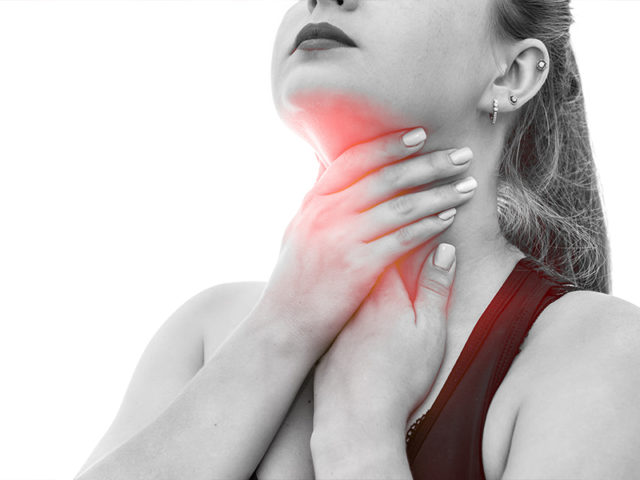
Thyroid Cancer can cause any of the following signs or symptoms:
- A lump in the neck, sometimes growing quickly
- Swelling in the neck
- Pain in the front of the neck, sometimes going up to the ears
- Hoarseness or other voice changes that do not go away
- Trouble swallowing
- Trouble breathing
- A constant cough that is not due to a cold
The Risk Factors Associated With Thyroid Cancer

Some of the risk factors for Thyroid Cancer include:
- Gender & Age: For unclear reasons Thyroid Cancer (like almost all diseases of the thyroid) occur about 3 times more often in women than in men. Thyroid Cancer can occur at any age, but the risk peaks earlier for women (who are most often in their 40s or 50s when diagnosed) than for men (who are usually in their 60s or 70s).
- Family History: Having a first-degree relative (parent, brother, sister, or child) with Thyroid Cancer, even without a known inherited syndrome in the family, increases your risk of Thyroid Cancer. The genetic basis for these cancers is not totally clear.
- Exposure To Radiation: Radiation exposure is a proven risk factor for Thyroid Cancer. Sources of such radiation include certain medical treatments and radiation fallout from power plant accidents or nuclear weapons.
- Being Obese: According to the International Agency for Research on Cancer (IARC), people who are obese have a higher risk of developing Thyroid Cancer than those who are not. The risk appears to go up as the Body Mass Index (BMI) increases.
- Iodine Imbalance In The Diet: Follicular Thyroid Cancer is more common in areas of the world where people’s diets are low in iodine. On the other hand, a diet high in Iodine may increase the risk of Papillary Thyroid Cancer.
Endometrial Cancer
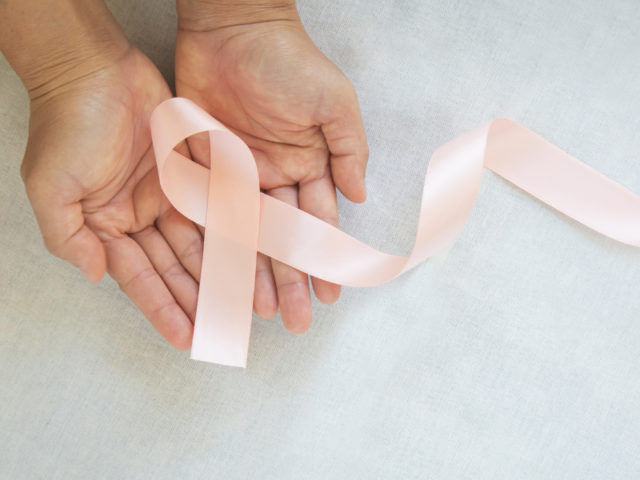
Endometrial cancer rates in India are 4.3 per 100,000 (Delhi). Though the numbers are low, there is an absolute need to spread awareness about this condition. To help understand the condition better, Dr Anil Heroor, Director-Advanced OncoSurgery Unit of Fortis Hospitals Mumbai shares some vital facts.
Endometrial Cancer Facts You Should Know
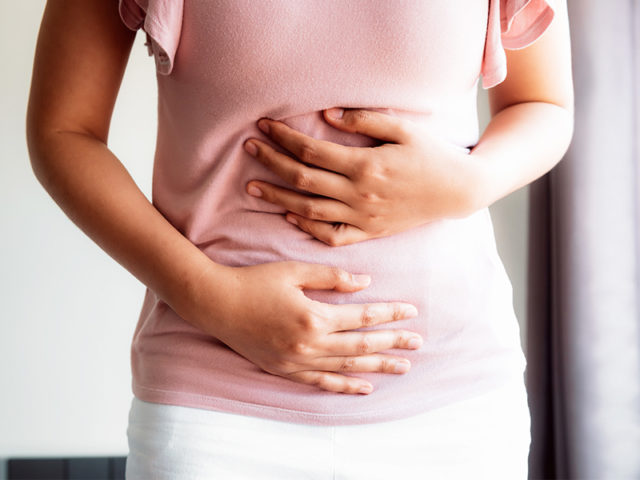
Endometrial Cancer begins in the uterus. The uterus is the hollow, pear-shaped pelvic organ where foetal development occurs. This kind of Cancer begins in the layer of cells that form the lining (Endometrium) of the uterus. Endometrial Cancer is sometimes called Uterine Cancer. Other types of cancer can form in the uterus, including Uterine Sarcoma, but they are much less common than Endometrial Cancer. Endometrial Cancer is often detected at an early stage because it frequently produces abnormal vaginal bleeding. If Endometrial Cancer is discovered early, removing the uterus surgically often cures it.
Common Causes And Symptoms Of Endometrial Cancer

The causes of Endometrial Cancer are not really clear. What’s known is that something occurs to create changes (mutations) in the DNA of cells in the Endometrium — the lining of the uterus that can lead to cancer. Symptoms include:
- Vaginal bleeding after menopause
- Bleeding between periods
- Pelvic pain
The Risk Factors & Effective Treatment Options For Endometrial Cancer

The risk factor of developing Endometrial Cancer, include:
- Obesity
- Things that affect hormone levels, like taking Estrogen after menopause, birth control pills, or Tamoxifen; the number of menstrual cycles (over a lifetime), pregnancy, certain ovarian tumors, and Polycystic Ovarian Syndrome (PCOS)
- Use of an Intrauterine Device (IUD)
- Age
- Diet and exercise
- Type 2 Diabetes
- Family history (having close relatives with Endometrial or Colorectal Cancer)
- Having had Breast or Ovarian Cancer in the past
- Having had Endometrial Hyperplasia in the past
- Treatment with Radiation Therapy to the pelvis to treat another Cancer
Some of these, like pregnancy, birth control pills, and the use of an intrauterine device are linked to a lower risk of Endometrial Cancer, while many are linked to a higher risk.
The most common types of treatment for women with Endometrial Cancer are:
- Robotic/Laparoscopic surgery for Endometrial Cancer
- Radiation Therapy for Endometrial Cancer
- Chemotherapy for Endometrial Cancer
- Hormone Therapy for Endometrial Cancer
Ovarian Cancer
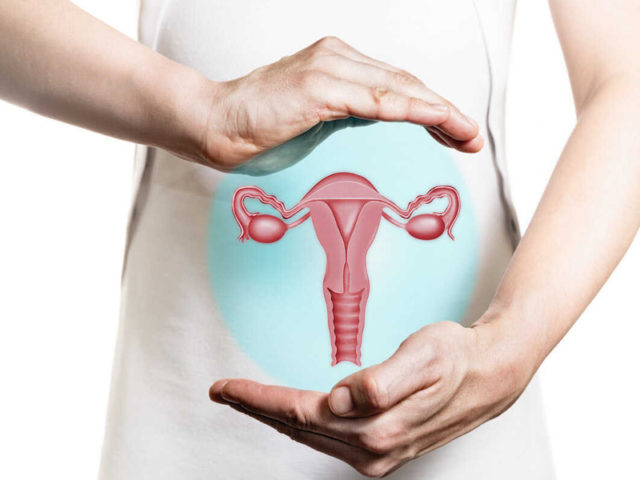
Ovarian cancer is one of the less common gynecological malignancies in India with a projected risk of 1 in 133 females having ovarian cancer, and more than 40,000 new cases per annum. This calls for expert-advice on better understanding this condition and Dr Anil Heroor, Director-Advanced OncoSurgery Unit of Fortis Hospitals Mumbai explains it all.
Age Plays A Big Role In Ovarian Cancer

Ovarian Cancer is a growth of cells that forms in the ovaries. The female reproductive system contains two Ovaries, one on each side of the uterus. The Ovaries — each about the size of an Almond — produce eggs (Ova) as well as the hormones Estrogen and Progesterone. Ovarian Cancer is rare in women younger than 40 years. Most Ovarian Cancers develop after menopause. Half of all Ovarian Cancers are found in women of 63 years of age or older.
Common Causes & Symptoms Of Ovarian Cancer

When Ovarian Cancer first develops, it might not cause any noticeable symptoms. When Ovarian Cancer symptoms happen, they’re usually attributed to other, more common conditions. Signs and symptoms of Ovarian Cancer may include:
- Abdominal bloating or swelling
- Quickly feeling full when eating
- Weight loss
- Discomfort in the pelvic area
- Fatigue
- Back pain
- Changes in bowel habits, such as constipation
- A frequent need to urinate
The Risk Factors Associated With Ovarian Cancer

- Being Overweight Or Obese: Obesity has been linked to a higher risk of developing many Cancers. Obese women (those with a body mass index [BMI] of at least 30) probably have a higher risk of developing Ovarian Cancer, but not necessarily the most aggressive types, such as high-grade serous Cancers. Obesity may also negatively affect the overall survival of a woman with Ovarian Cancer.
- Having Children Later Or Never Having A Full-Term Pregnancy: Women who have their first full-term pregnancy after age 35 years or who never carried a pregnancy to term have a higher risk of Ovarian Cancer.
- Taking Hormone Therapy After Menopause: Women using Estrogen alone or with Progesterone after menopause have an increased risk of developing Ovarian Cancer compared to women who have never used hormones.
- Having A Family History Of Ovarian Cancer, Breast Cancer, Or Colorectal Cancer: Ovarian Cancer can run in families. Your Ovarian Cancer risk is increased if your mother, sister, or daughter has (or has had) Ovarian Cancer. The risk also gets higher the more relatives you have with Ovarian Cancer.
- Peutz-Jeghers Syndrome: People with this rare genetic syndrome develop Polyps in the stomach and intestine while they are teenagers. They also have a high risk of Cancer, particularly Cancers of the digestive tract (esophagus, stomach, small intestine, colon). Women with this syndrome have an increased risk of Ovarian Cancer, including both Epithelial Ovarian Cancer and a type of Stromal Tumor called Sex Cord Tumor with Annular Tubules (SCTAT). This syndrome is caused by mutations in the gene STK11.
- Smoking: Smoking doesn’t increase the risk of Ovarian Cancer overall, but it is linked to an increased risk for the mucinous type.
Treatment usually involves surgery and chemotherapy.

